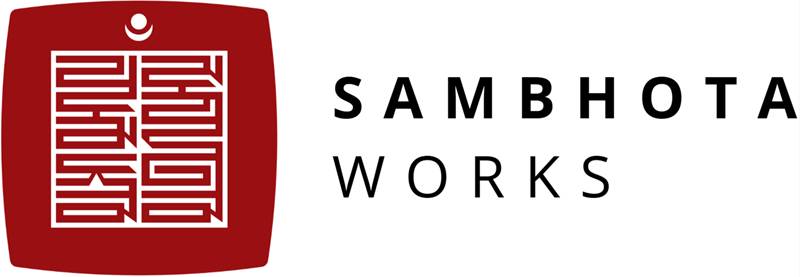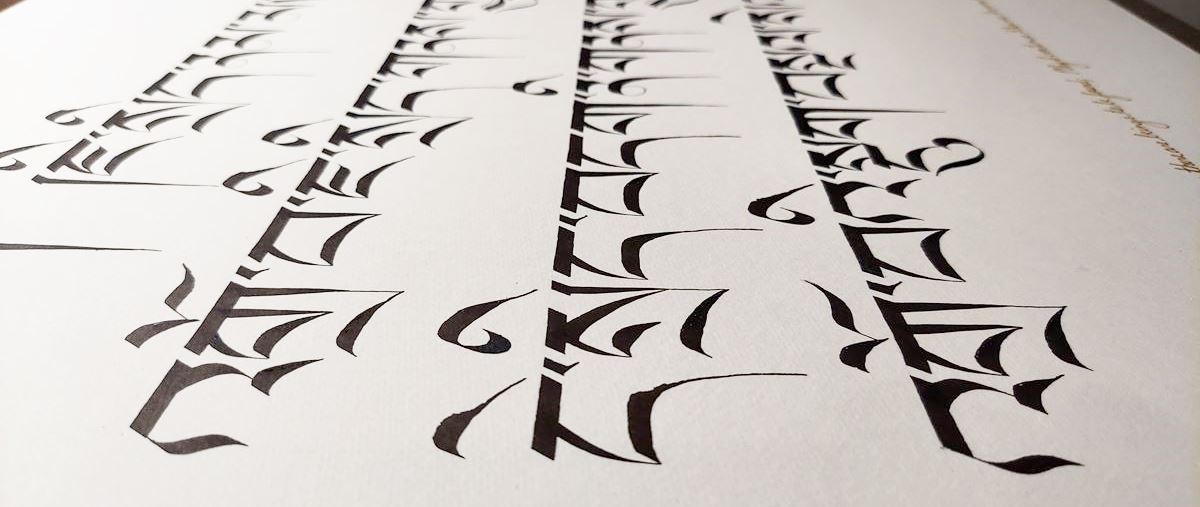The Tibetan Uchen Script
Introduction
The Tibetan Uchen script is one of the most prominent and widely recognized writing systems used for the Tibetan language. Known for its distinctive, formal, and ornate style, the Uchen script plays a crucial role in Tibetan literature, religious texts, and cultural heritage. This essay explores the origins, characteristics, and significance of the Uchen script in Tibetan society.
Origins of the Uchen Script
The Tibetan Uchen script, which means “with a head” in Tibetan, was developed during the 7th century CE under the patronage of King Songtsen Gampo. The creation of this script is attributed to Thonmi Sambhota, a Tibetan scholar who was sent to India to study Sanskrit and the Indian writing systems. Upon his return, Thonmi Sambhota devised the Tibetan script based on the Gupta script of India, which was prevalent at the time.
The development of the Uchen script marked a significant milestone in Tibetan history, facilitating the transcription of oral traditions, administrative documents, and, most importantly, the translation of Buddhist scriptures from Sanskrit into Tibetan. This enabled the preservation and dissemination of religious and cultural knowledge, contributing to the rich literary heritage of Tibet.
Characteristics of the Uchen Script
The Uchen script is characterized by its elegant and structured form, making it easily recognizable and highly regarded for its aesthetic qualities. Some of the key characteristics of the Uchen script include:
Headed Letters: The most distinguishing feature of the Uchen script is the presence of a horizontal line, or “head,” that runs across the top of each character. This head is uniform across the script, giving it a cohesive and linear appearance. The term “Uchen” literally means “with a head,” referring to this prominent feature.
Clear and Geometric Shapes: Uchen characters are designed with clear, geometric shapes, ensuring that each letter is distinct and legible. The script employs a combination of straight lines, curves, and angles to form each character, contributing to its formal and structured look.
Vowel Diacritics: The script includes a set of vowel diacritics that are placed above or below the consonants to indicate different vowel sounds. These diacritics are essential for accurately representing the phonetics of the Tibetan language.
Consistency and Symmetry: The Uchen script is known for its consistency and symmetry. The uniform height of the characters and the regular spacing between them create a visually harmonious and balanced appearance, which is particularly suited for religious texts and formal documents.
Use in Calligraphy: Due to its ornate and formal style, the Uchen script is often used in Tibetan calligraphy. Calligraphers take great care in rendering each character with precision and elegance, making Uchen script not only a medium for written communication but also an art form in itself.
Significance of the Uchen Script
The Uchen script holds immense cultural and religious significance in Tibetan society. It is the primary script used for writing Tibetan Buddhist scriptures, including the Kangyur and Tengyur, which are the core texts of Tibetan Buddhism. The script’s formal and aesthetic qualities make it particularly suitable for these sacred texts, ensuring that they are presented with the reverence and respect they deserve.
In addition to religious texts, the Uchen script is used for various other purposes, including historical chronicles, legal documents, and literary works. Its use extends to educational materials, ensuring that students learn to read and write in this traditional script as part of their cultural and religious education.
The Uchen script also plays a vital role in the preservation and promotion of Tibetan cultural identity. In exile communities and within Tibet, efforts to teach and maintain the use of Uchen script are seen as essential for preserving Tibetan heritage in the face of modern challenges.
Conclusion
The Tibetan Uchen script is a cornerstone of Tibetan written culture, embodying the rich history, religious devotion, and artistic expression of the Tibetan people. Its distinctive characteristics, such as the headed letters, geometric shapes, and symmetry, make it an elegant and highly regarded script. As a medium for preserving and transmitting religious and cultural knowledge, the Uchen script continues to be an integral part of Tibetan identity and heritage.

